The Cannondale Tesoro Neo X2 is an e-bike with a decent rear carrier and therefor it can be used as an e-trekkingbike. Or not? Read the review and watch the video!
- Weight: 25,64 kg (24 kg claimed)
- Size: SM-XL
- Price: € 3.499,00
It has already been a half year that the Cannondale Tesoro Neo X was introduced in The Netherlands. I was invited to that introduction and we spent a day in The Hague and surroundings. Nice day, nice bike. But I had no luggage to carry on the rack that is rated for 20 kg (later more on this) so I asked Cannondale if I could have one Tesoro later for a more longer-term testing. Well it took Cannondale 6 months to get the bike to me and I got it in the beginning of the Covid-19 crisis in my home country. This has consequences since travelling is restricting and camping not allowed but I still live in a great – flat – biking country, so I made the best of it hence this review.
Size and weight
The Cannondale Tesoro Neo X is a 29-er and the model that I am reviewing is the X2 version. With a price of € 3.499,00 it fits between the cheaper X3 (€ 2.999,00) and the more expensive X1 (€ 3.999,00). On the differences later more. The one I am reviewing has a Cannondale frame size SM and it fits my length of 169,5 cm well. The total weight as stated by Cannondale is 24 kg. I measured 25,64 kg – with pedals, most manufacturers measure without – and that is quite a bit more and also on the high side for a bike like this.
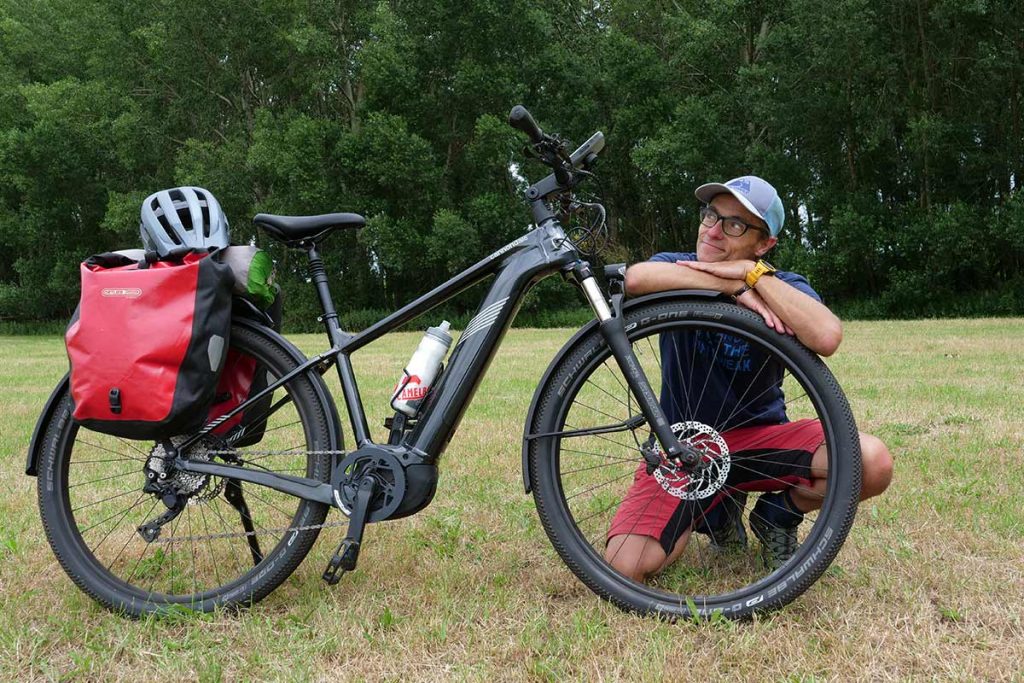
Frame
One thing that is the same for all three Tesoro Neo X’s is the Cannondale aluminum frame that also contains the battery that provides energy to the Bosch engine. Because of this, the downtube is nicely oversized and I like the beefy look of it. The frame tubes are manufactured by hydroforming. Hydroforming is a process where water under pressure is used to shape the tubes. In this way tubes can be made in virtually any shape or form and tubes can be extremely thin – hence light – without losing strength.
The top tube has a steep slope and that it almost continues in the upper chain stay. Again: I like the looks of it and its practical for short people too. I can get off the bike with the bike between my legs; good for the balance and a secure feeling. Unlike most frames nowadays all welds on the Cannondale are visible and not smoothed out with a grinder or putty. The real welding quality is not a hidden secret and I think it looks nice and technical. The Bosch mid-engine is an integral part of the frame and therefore it is a very solid construction
Wiring and mounting points
What I also like about the Tesoro series, is the way how the cables that connect to the rear brake and the derailleur and the wiring for the rear lamp and sensors for the e-system are hidden inside the frame. It does not only look good, but it is also a nice way to protect the cables and make them less vulnerable.
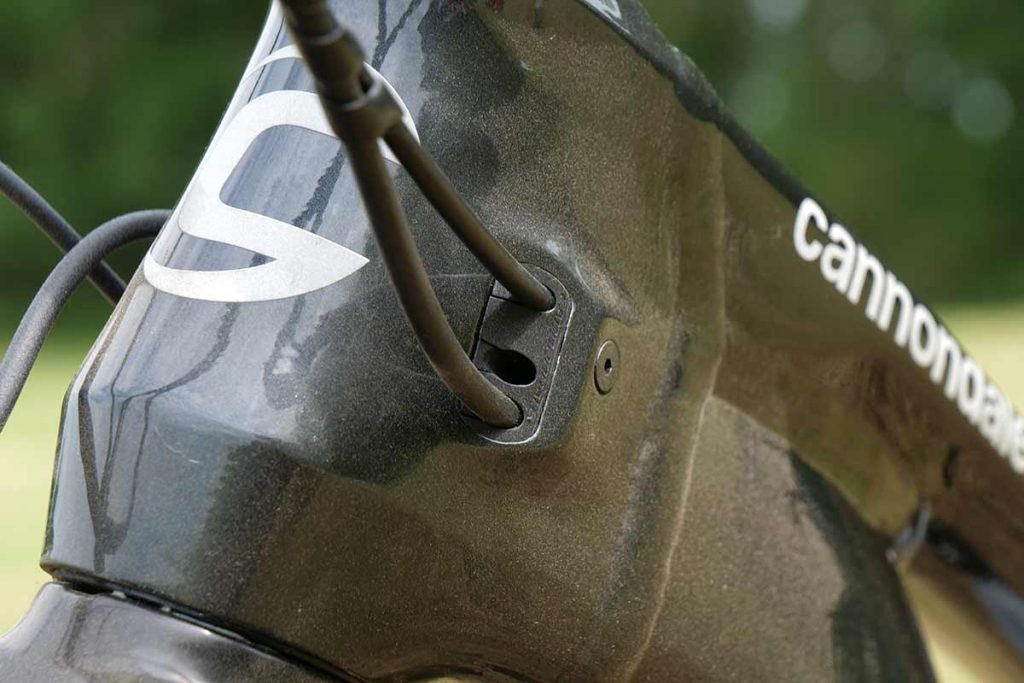
The frame has two places where you can mount a water bottle cage for two small bottle cages, or you can mount a big one. Although this is not totally true… Both mounting points are on the downtube and one of them is actually for the mounting of an extra external battery. When this one is in place, you lose the possibility to even mount one bottle cage. In that respect it is not so clever that Cannondale did not make a mounting point on the seat tube.
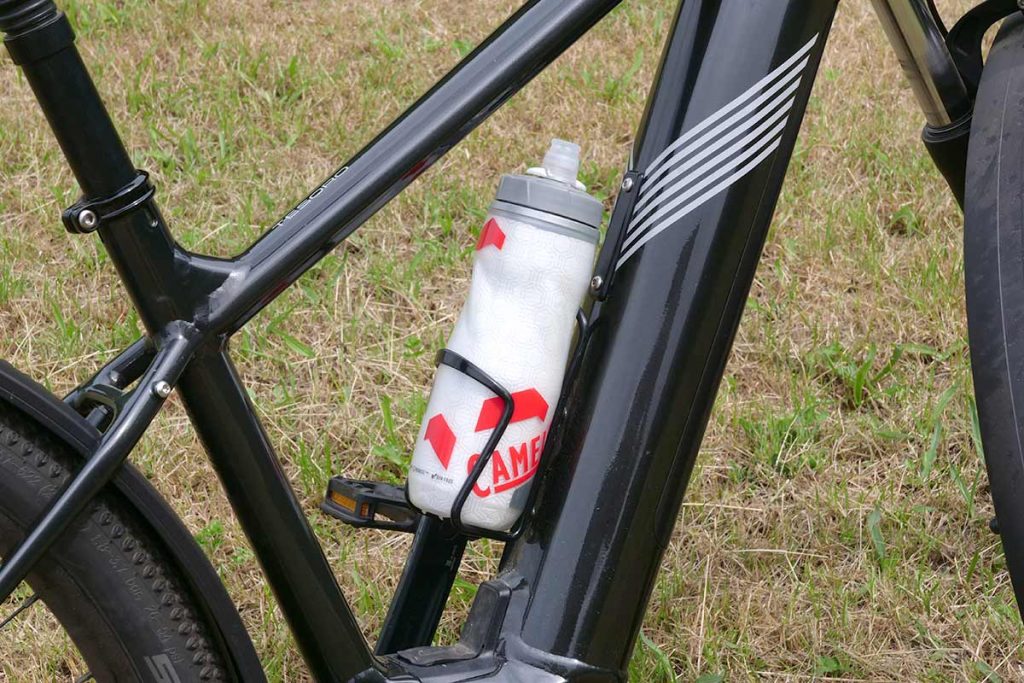
The frame has a place for a bottle cage… if you don’t need the second battery.
Fork
The fork is one of the big differences between the three bikes that Cannondale has on offer. The Cannondale Tesoro Neo X2 is equipped with a SR Suntour XCM 34 Boost with 100mm of travel. This XCM 34 is a 100% spring operated fork whilst on the more expense Neo X1 the fork is air-supported. On the cheaper X3 the fork is almost the same as the X2 with the difference that the leg diameter is 30 mm and not 34 mm.
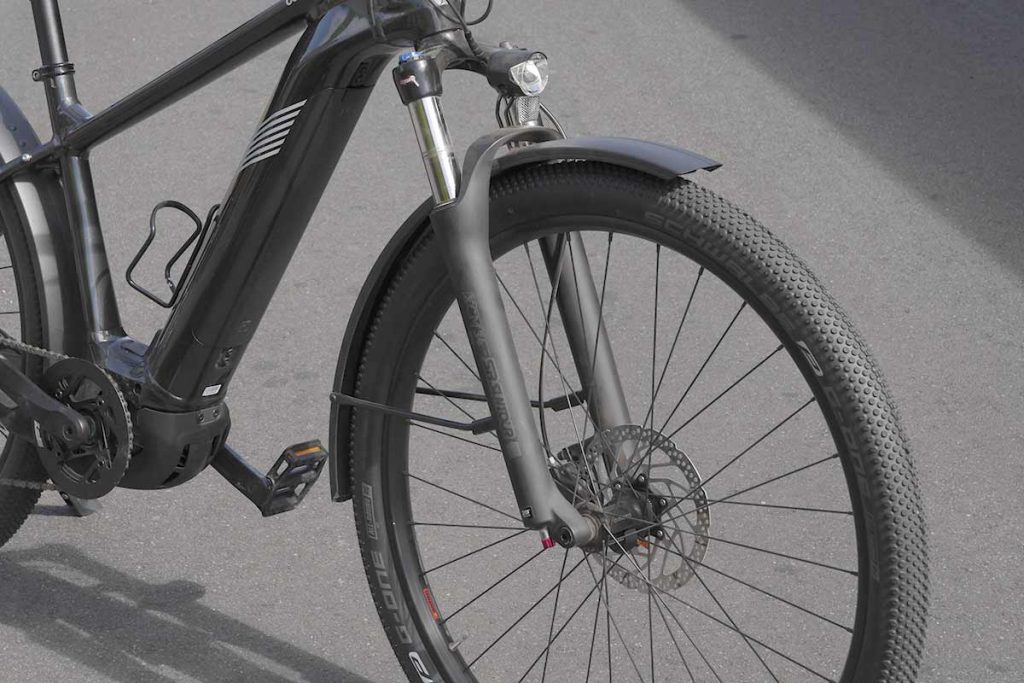
On top of the right fork leg the lockout is mounted and on the lower end of the leg there is the rebound adjustment nob. The rebound is the ‘bounce back’ capability of the spring. Too much rebound and the fork is jumpy, too little rebound and the fork always reacts ‘too late’. The correct rebound makes the fork follow humps and bumps in the terrain in a proper way.
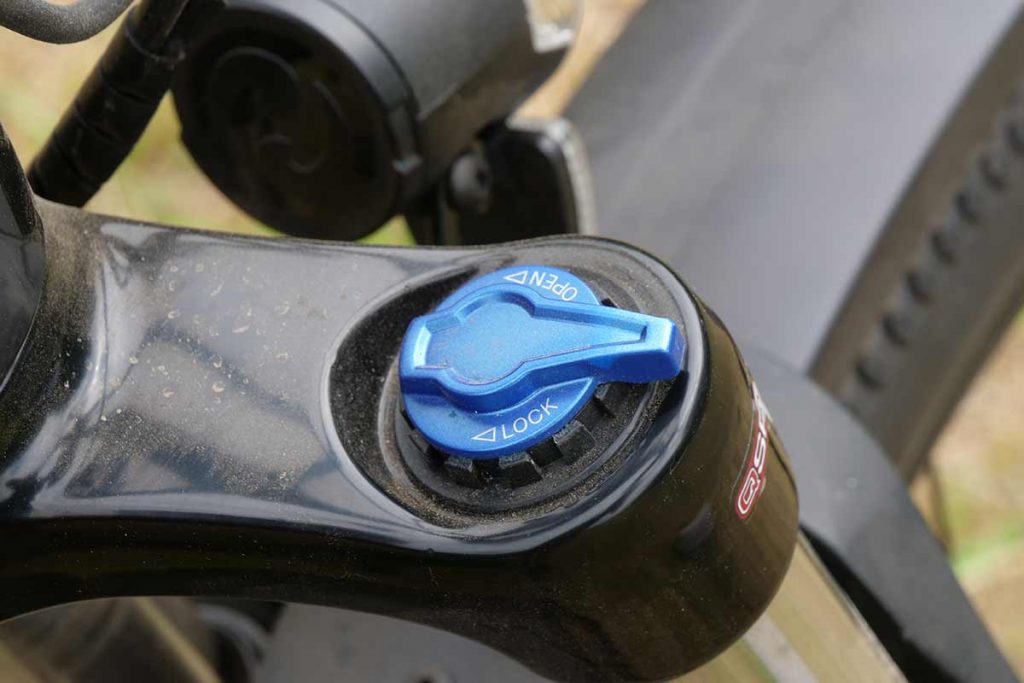
With the lockout I can turn the suspension fork in one without. 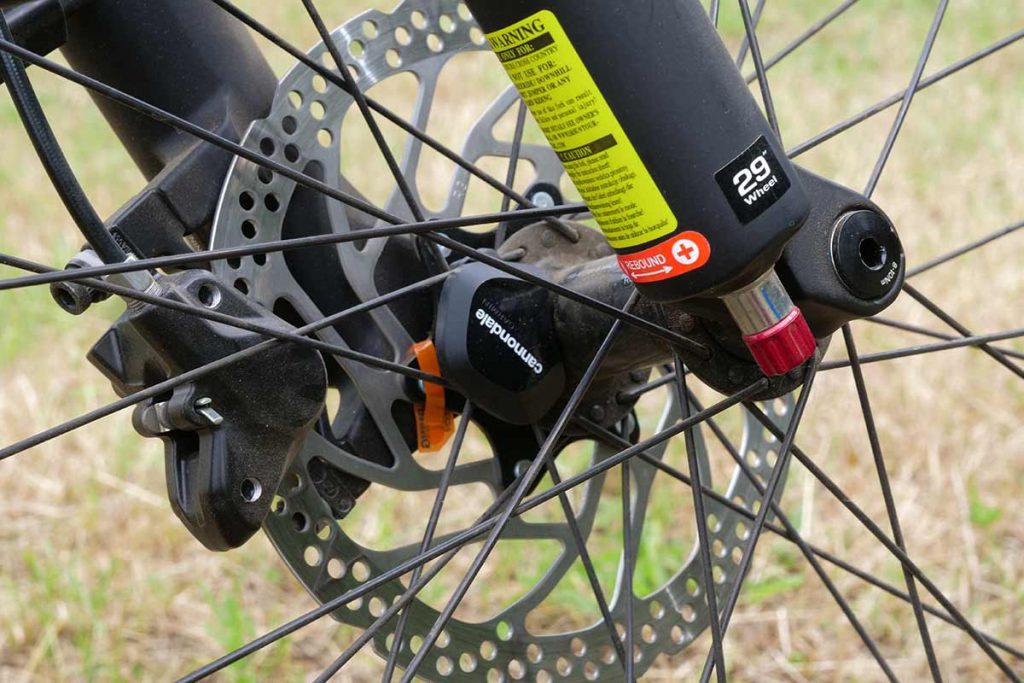
The rebound button is positioned on the bottom of the left fork leg.
On the left leg there is the adjusting mechanism for the preload of the spring. The preload is important because you need to adjust the bike to your weight and since every rider has a different weight you need to set this first. The preload is mostly set when sitting on the bike, stand on the peddles a few times and get back to the sitting position. With the correct preload the fork should sag about 15-20% which is easy in this case: 15-20 mm. It takes some time and experimenting, but it is worth the effort. By the way, the weight of the fork solo is according to SR Suntour 3420 grams.
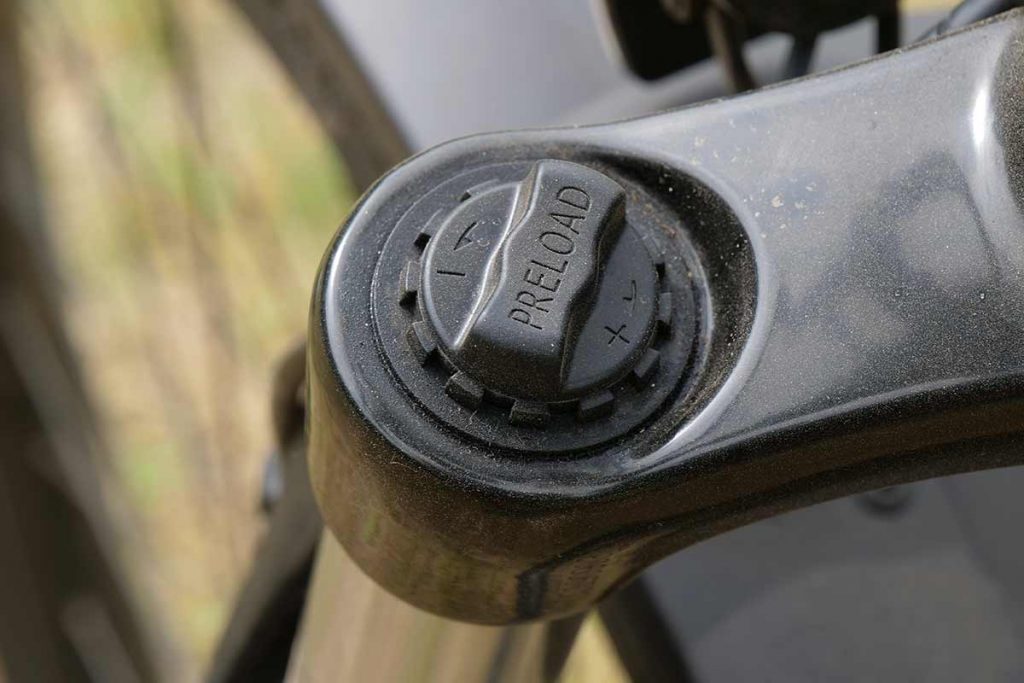
Bosch engine
The engine in the Tesoro-series is a Bosch Performance Line CX 250W drive-unit with a 500Wh battery. The engine is situated in the middle of the bike and the crank is an integral part of it. This means that the Bosch is placed exactly where I like it: in the middle and low. Both contribute to the balance and general handling of the bike. To operate the engine and all its functions, a small Bosch Purion display is situated on the left side of the handlebar.
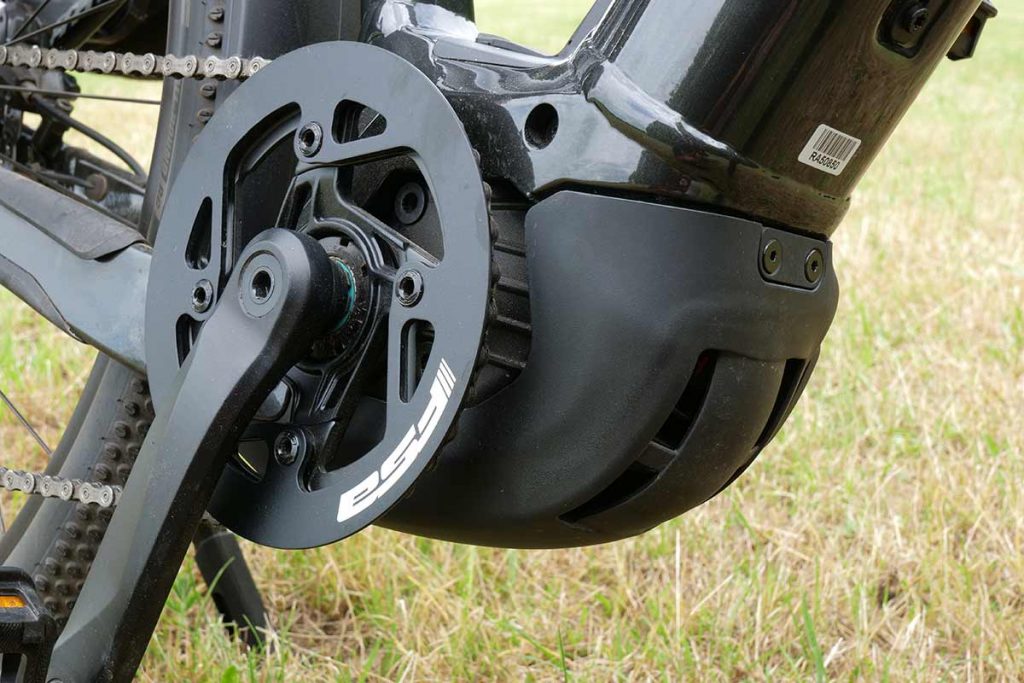
It has two buttons on the left side: the plus and minus symbols are used to change between the amount of support given by the engine. The Eco mode is the most energy friendly position and is followed by Tour, Sport and Turbo as the most energy consuming choice. And it is also possible to turn the engine to ‘off’ but still see the information in the display. On the top side of the display is the on/off button for the whole system and on the downside is a ‘walk-assistant’ button. Pushing it makes the bike go slowly forward and is a helpful function for steep climbs if one doesn’t dare to bike it. Or pushing the bike up a ramp to get it in a van.
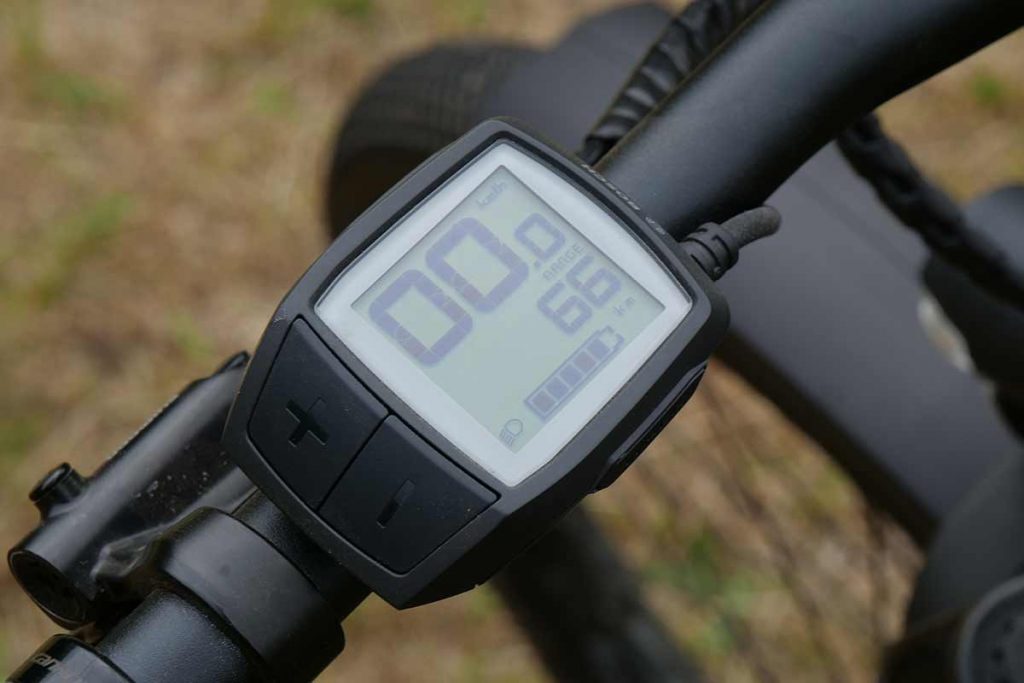
The display also displays information about the speed I am doing and the distance I can bike with the remaining energy in the battery. It also has a backlight function if you are biking when it is dark.
Lights
The battery also provides the power for the lighting. On the rear a Herrmans H-Trace is mounted and at the front a Herrmans H-Black MR4 E. With other e-bikes I reviewed the lights were always on or there is a button in the display. With the Purion it is a matter of pushing the + button a bit longer. I had to ask Cannondale… sometimes providing a decent manual with a bike is key. The rear light is bright and visible from a great distance. The head light is good enough.
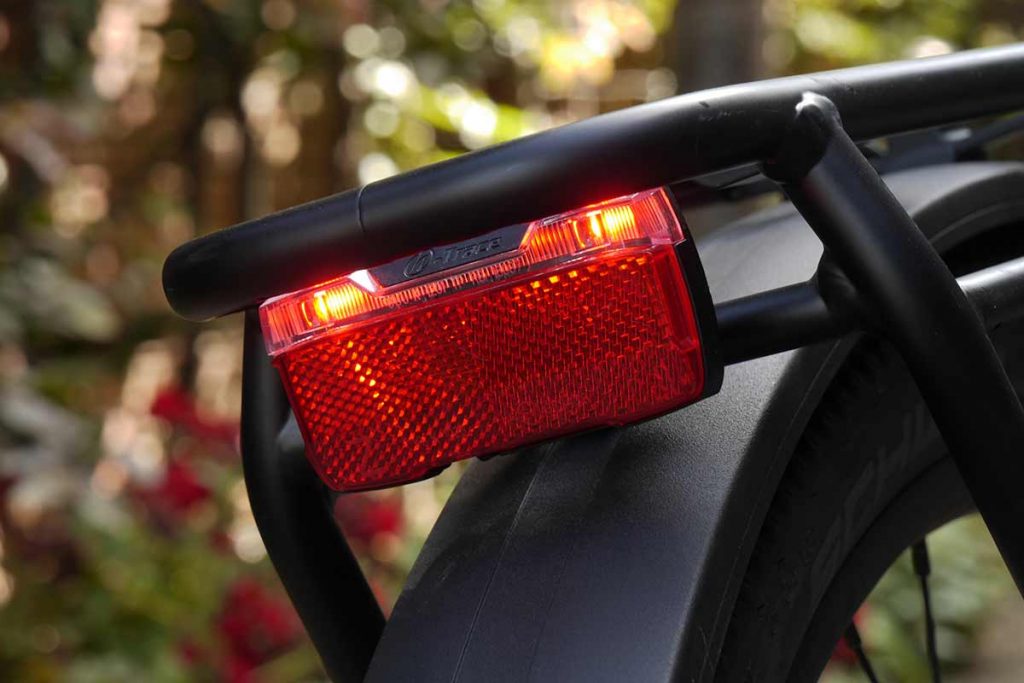
The rear light is very visible from behind. 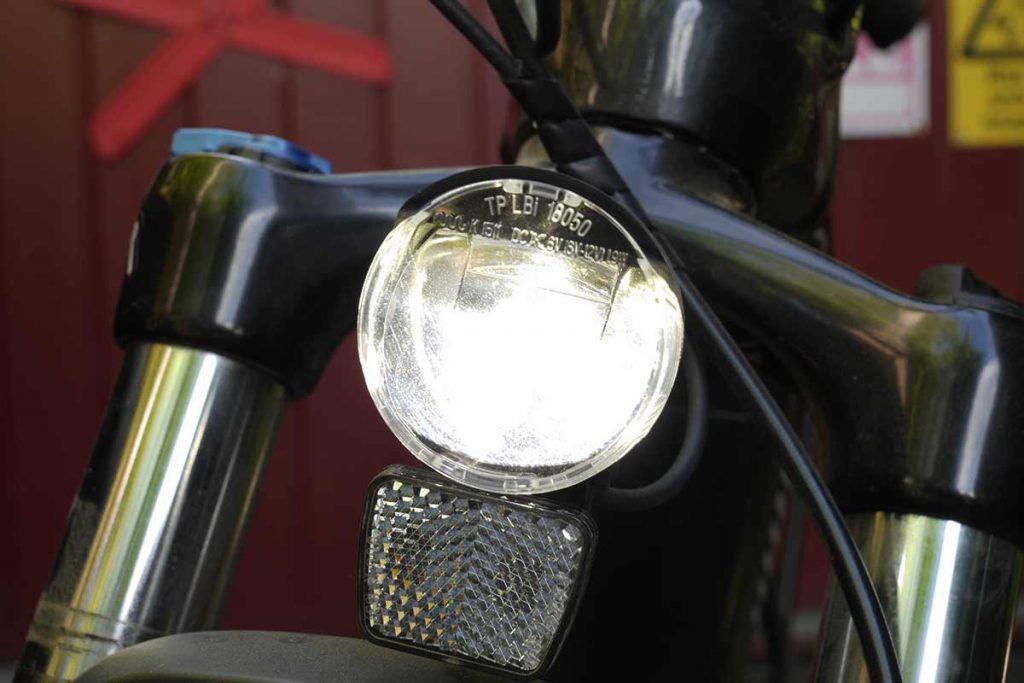
The front light is sufficient.
Drivetrain
The Bosch has a crank with a 38T sprocket. This is connected to the rear wheel with a Shimano HG54 chain and there it finds a Shimano HG500 11-42 10-speed cassette. Shifting through the gears is done with a Shimano Deore shifter on the left side of the handlebar. This shifter operates a Shimano Deore GS rear derailleur.
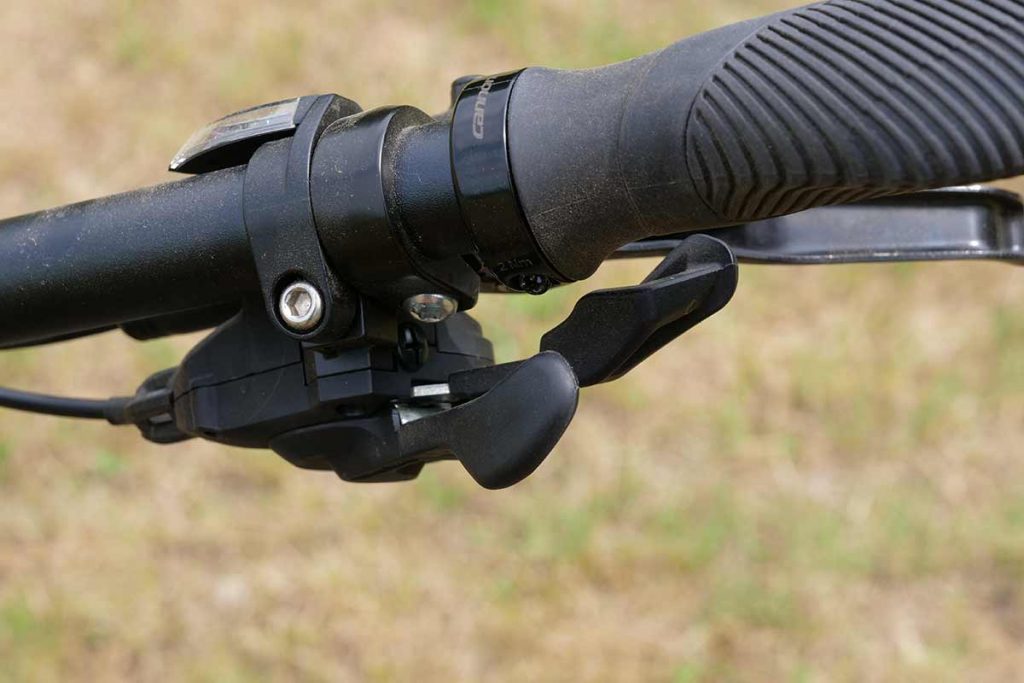
The Shimano Deore shifter on the left side of the handlebar is precise. 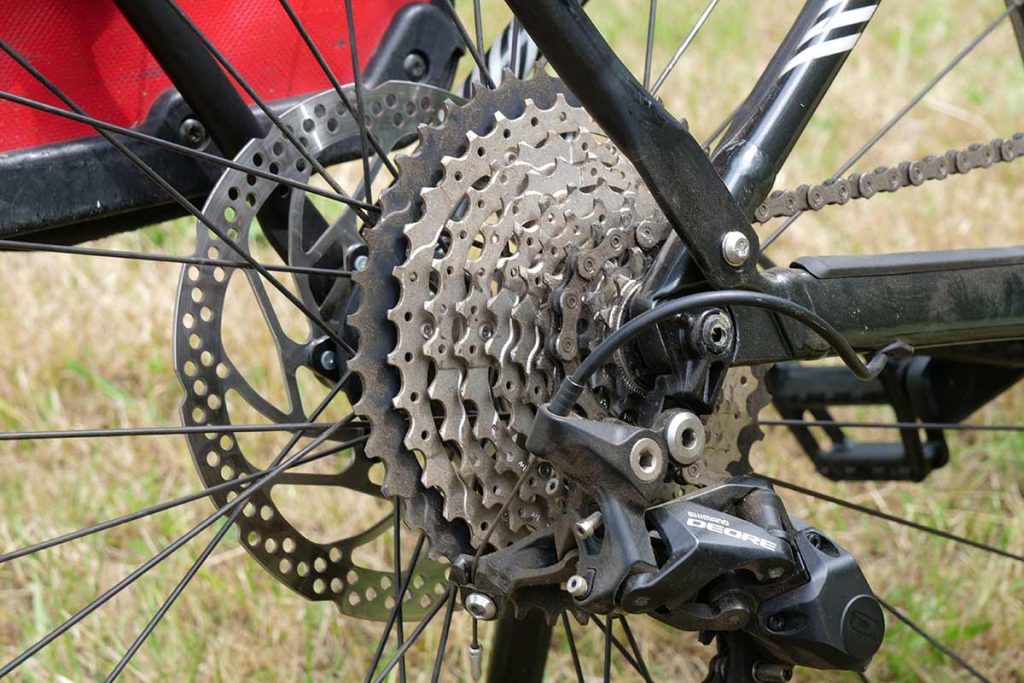
The rear wheel has a Shimano HG500 11-42 10-speed cassette.
The derailleur is equipped with Shadow Plus technique. Shadow Plus is a small lever on the derailleur that can be moved up and down and blocks (or unblocks) the movement of the derailleur. Especially on uneven surfaces like gravel roads or dirt tracks the locked position helps the chain to stay on the sprockets. But is also makes shifting a little bit less smooth in the locked position so normally it should be unlocked. In practice I don’t have any negative remarks on the drivetrain. It is smooth, without too much noise and I never missed a gear. Also, the reach in my flat country is fine. Due to Covid-19 and the restricted travel, the steepest climb was one of the higher bridges.
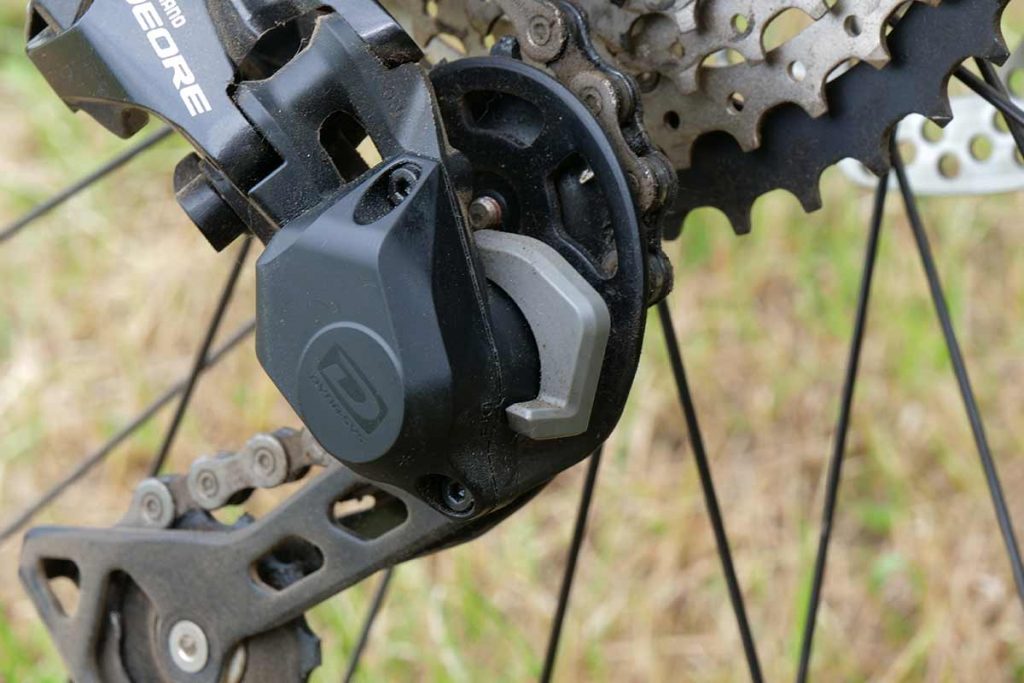
Carriers and luggage
The reason why I thought this e-bike is interesting is because of the rear carrier. It looks very solid, has high and low mounting bars for panniers and it is rated for 20 kg. That is fine for what I do when camping. The panniers that I use the most are the Ortlieb Classics or similar ones from Vaude. Since the top tubes of the carrier are 15 mm wide and the lower ones 12 mm the panniers fit on both positions. In this respect I think de Cannondale designers did think about the bike being used for how I want to use it. Although the carrier has no problems with panniers, I do miss a little bit support on the back side of the bags. The space between de carrier downtube and the frame is a bit to open.
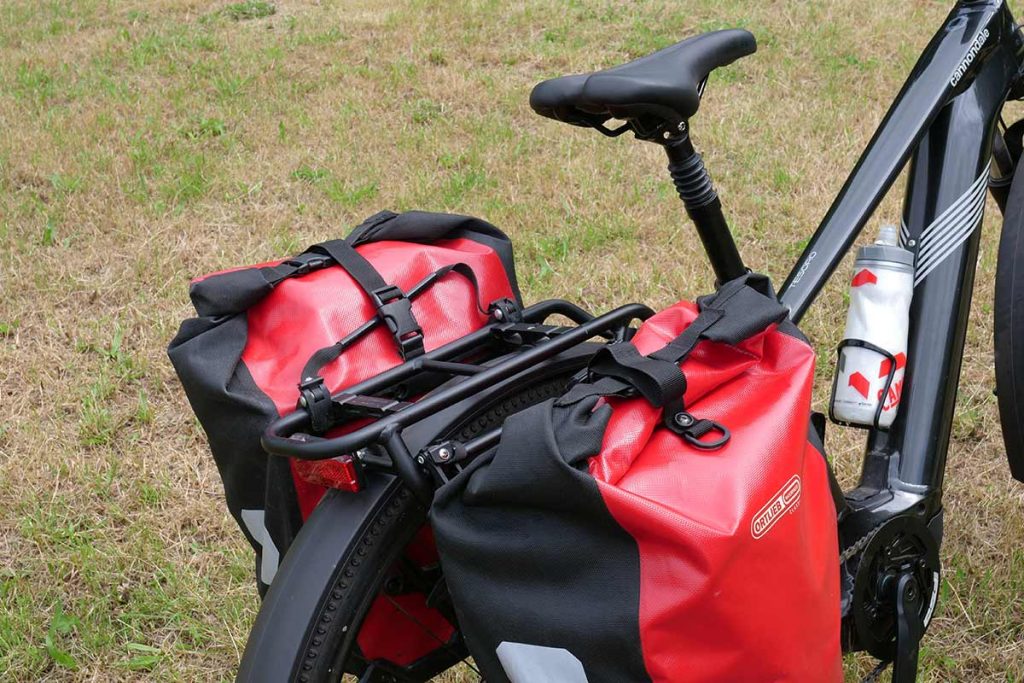
When I test trekking bikes, I use 10 kg of luggage in front panniers and in the back 15 kg. This time I only used the rear ones of course. For a correct comparison to other bikes I also ride the bike with dumbbells instead of real camping equipment because then I know exactly where the weight is. With this weight the Cannondale handles fine and steering is almost as normal as without panniers. The low center of gravity and the weight of the fork help balance the bike.
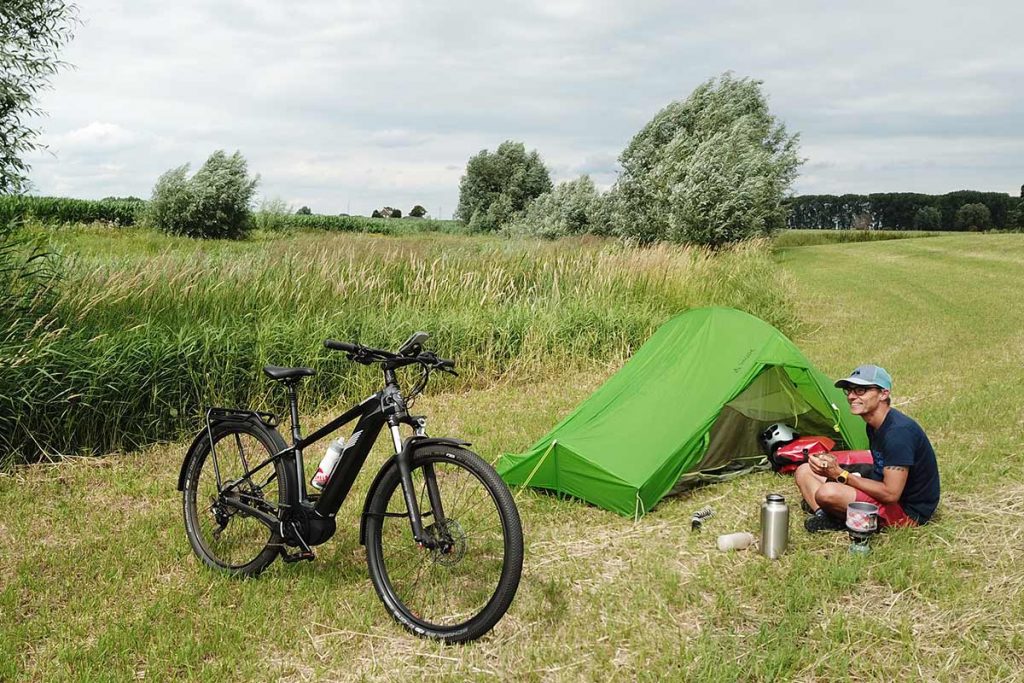
What you should be aware of – and not many bike manufacturers are very clear about this – is that the total weight limit of the bike is 150 kg. So, 150 kg minus 20 kg luggage and 25,64 kg for the bike, leaves you with approx. 104 kg weight allowance left for yourself. And if you use an extra battery pack….
PowerPack 500 battery range
The most frequently asked question to any person that deals with e-bikes: what is the range? This question is hard to answer. Why? Well, there are so many different factors that influence this range. How heavy is the rider? How much luggage? Wind? Temperature? Tire pressure? In which support mode does one ride? How many changes are made? And…how much physical power is the rider contributing?
The way how I normally test e-bikes is to let my legs do a lot of work. I try to keep in Eco mode and still get a speed of 25 km/h resulting in a nice workout. This time I did it also a bit differently: I put the bike in Turbo and I tried to find the sweet spot how to drain the battery as fast as I could and I found out that the 90 km range Cannondale promise, is quite accurate. If I do Eco mode only on a full charge the display tells me I can do 193 km. Well that is an estimation based on calculations not doing anything. When I start biking, I soon see the display change to 145 km of range. Roughly the range steps between Eco and Tour is about 40-50 km and between Tour and Sport and Sport and Turbo is about 10-15 km max.
Bosch knows that range is a big issue and made an eBike range assistant to give a ruff calculation on range. I put the link below the article. Charging an empty battery takes about 3 hours an when the battery is ‘empty’ there is still some power left for the lighting. Nice is also that the Bosch engine almost gives no resistance when riding without power.
Shimano disc brakes
With the heavier weight of an e-bike, brakes with stopping power are essential. The Cannondale Tesoro Neo X2 has them. Both the discs have a diameter of 180 mm and braking force is applied through Shimano MT200 brake levers and calipers. The calipers are single piston ones but together with the large disc stopping power is fine and not aggressive. But be careful with the rear one on wet tarmac; a 160 mm disc would make it block less easy. Although the brake levers are quite basic, I do like the fact that the distance between handlebar and lever can be adjusted. This is done with a small hex-screw and you will need a small hex-tool to adapt the lever to your size hands.

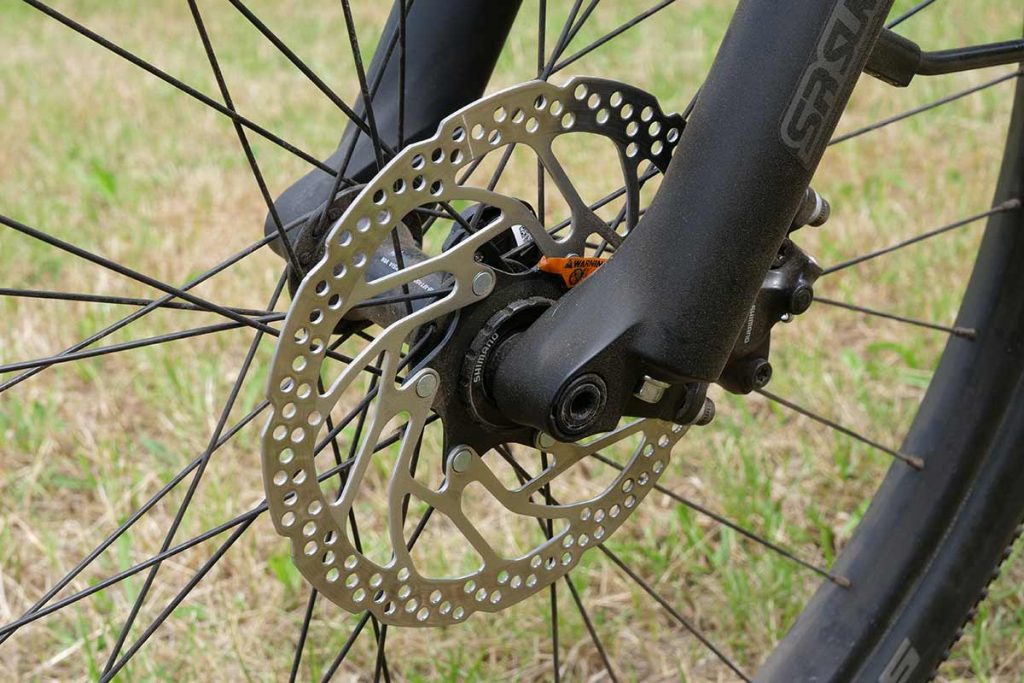
The 180 mm disc in the front and the single piston caliper work fine. 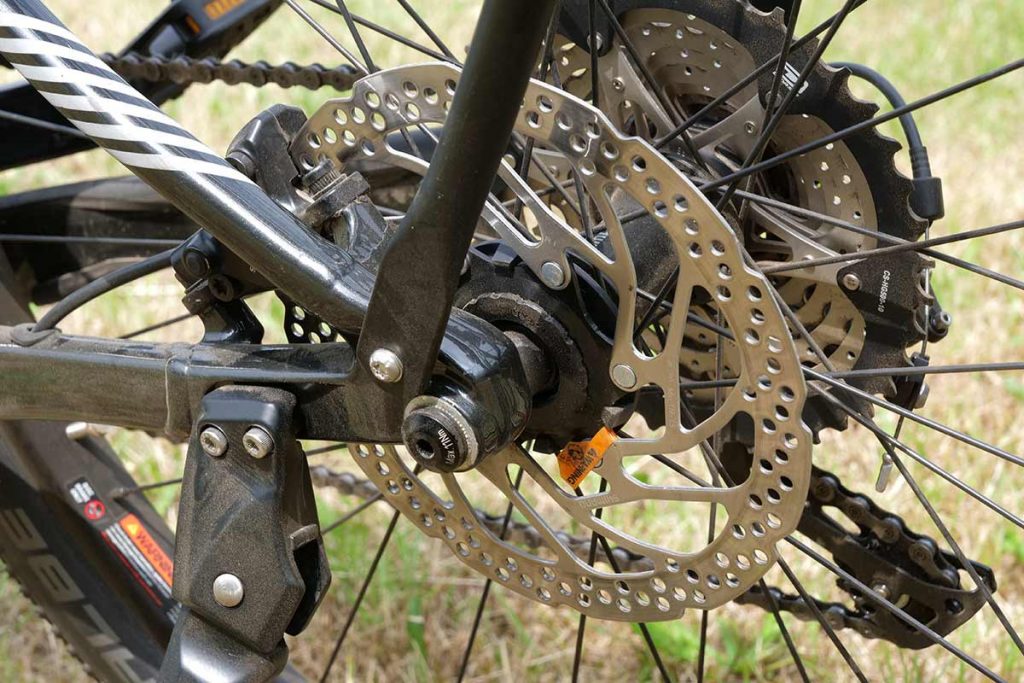
The rear could also do with a 160 mm disc.
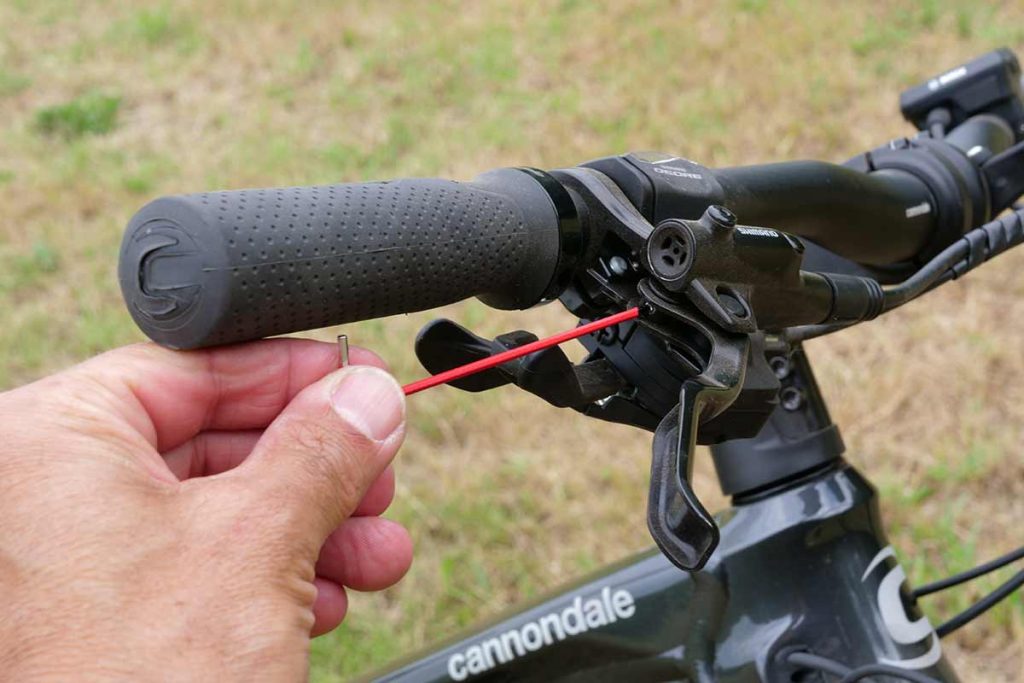
The ride
The position on the Tesoro Neo X2 is relaxed to a bit sporty. I can play around with the seat height and also the stem is quite easy to adapt to my personal liking. The handlebar is 740 mm wide and therefor gives a lot of control. On the downside I would like to make the remark that it is rather wide if you need to park the bike inside the house or shed with a door opening of 800 mm. Also riding though narrow tracks with bushes can be a challenge. The Cannondale Ergo Grips on the handlebar are not to my liking. The support part is way to flexible resulting in no support and hands that turn numb after a while. But this is also a very personal thing and easy to change. Not a reason for maybe not buying the bike.
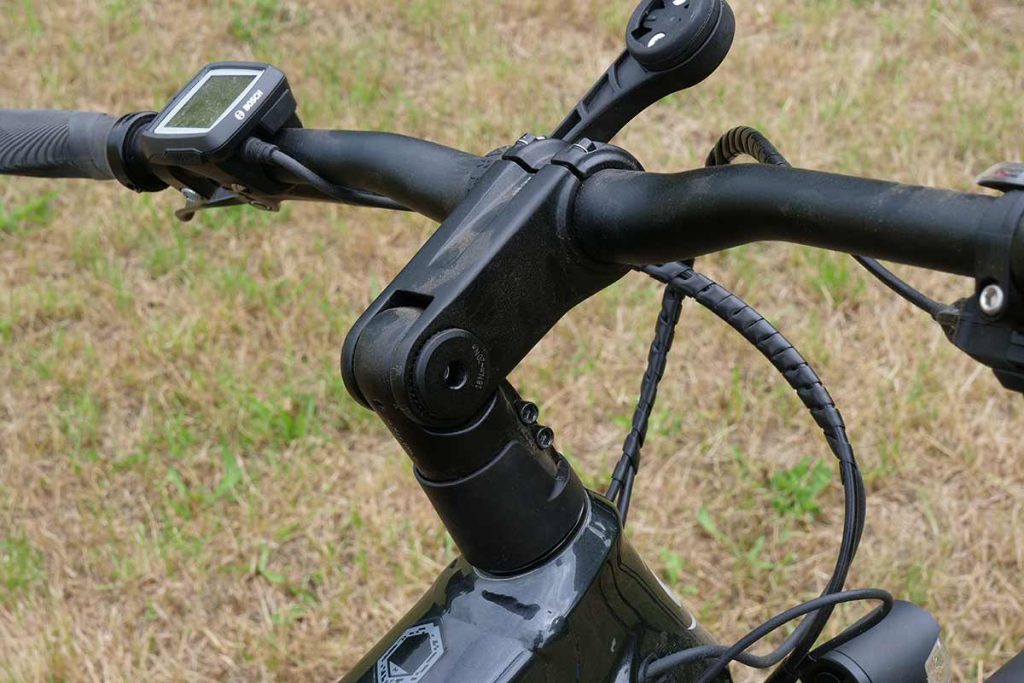

Very personal is also the suspension seat post. Most of them I don’t like because they are to bouncy. The Cannondale one surprised me; I actually like it. Is it necessary? No not really because of the big balloon tires. I would rather have a hydraulic seat post with a remote so I can adjust the seat height on longer rides.

The Tesoro Neo X2 is a 29-er as I mentioned earlier. Around the 29-rims Cannondale fitted Schwalbe G-One 29 x 2.25 tires. The profile with the small nobs works well on tarmac and on not to ruff dirt tracks or unpaved roads. I played around with tire pressure and found the sweet spot for me at the lower end of the G-One pressure range (1.8 – 3.7 ) at 2.1 Bar. Roll resistance is something that is hard to feel but I have the ‘idea’ that I feel it a little. But I need to state that I only have that idea after riding on the bike with the road only Schwalbe Marathons.

The ride is according to the 29-er characteristics. On long straight roads it rides very stable and humps and bumps are dealt with in great ease. On winding roads the handling is fine. When I get to trails with go tight curves, I rather be on a 27.5” wheelset but… with my 1.69 meter I don’t have the perfect length for a 29-er. The frame is stiff, takes the weight well and there is literally nothing negative I can write about it. I love the sloped top tube because it makes getting on and off the bike very easy and user friendly. The fork is a different story.
To be honest: I don’t fancy the SR Suntour XCM 34 Boost fork. I have several reasons for this. In general, I think that a trekking or city bike does not need to have a suspension fork. It makes the bike heavier and the handling is sometimes a bit less than with a fixed front fork. That I ride the bike mostly with a locked fork, says it all. But there is more.
Like I wrote above: spend time on the setup. I did and I can’t make the fork work like I want it. This has probably got to do with my weight and the panniers on the back. My 63 kg is on the lower end of the adjustment of the SR Suntour. But worse: when I brake there is slack between the inner legs – or stanchion tubes – and the outer legs. I feel it and I hear it and it is not nice.
Bosch engine practice
Hardly noticeable is the Bosch motor. It operates almost in silence and the support is silky smooth. The luggage is no problem What I need to get used to – my last test bike was a speed-pedelec – is the maximum speed of 25 -27 km/h. It was quite often that I was able to go faster but the engine works like a brake when you I want to go faster.
Three final remarks before I head on to my verdict. 1) In The Netherlands a bell is mandatory on a bike. The Cannondale Tesoro Neo X2 does not have it. 2) The kickstand is mounted to the lower chain stay on the left side of the bike. It is bolted with two hex-bolts. On the bike I tested earlier last year and on this one, the kickstand bolts loosen themselves resulting in a rattling sound. I used some Loctite to secure them. I had to do this repeatedly. 3) the bike does not come with a lock.
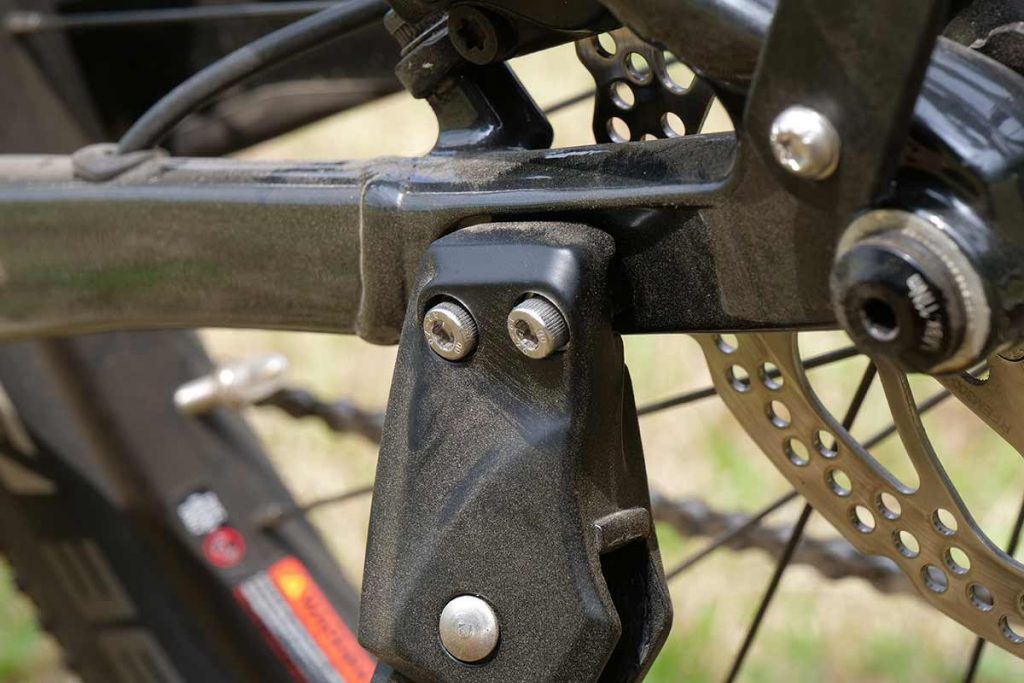
The bolts of the sidekick had to be secured with Loctite several times. 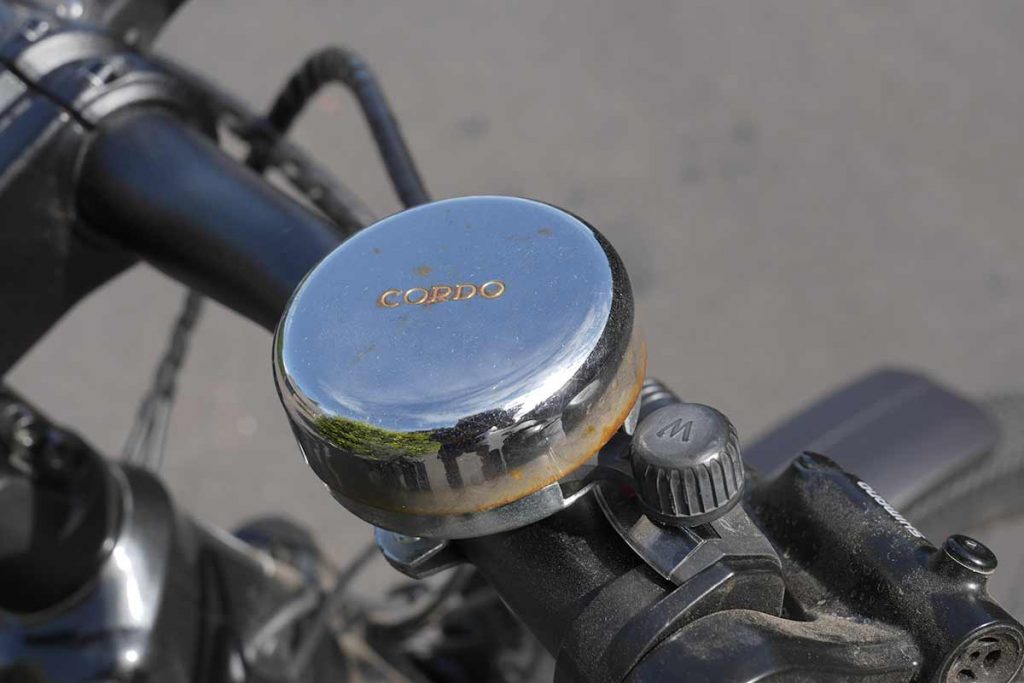
The bike was delivered without the mandatory bell so I used my own.
The verdict
The Cannondale Tesoro Neo X2 has a lot to offer to a wide range of bikers. It’s riding position and comfort is fine for daily commuting, for nice trips into the countryside where ‘off road’ non-paved roads are not a problem and it is fine for holiday trips with luggage. The rear carrier is capable of carrying 20 kg and with the extra weight the X2 handles fine. The big tires provide comfort and grip (and a little roll resistance). This is probably the first bike where I really liked the suspension seat post.
I don’t fancy THIS SR Suntour XCM 34 Boost fork. There is play between the inner and outer legs and I can’t make the suspension work for me. The rattling kickstand is easy to cure so let me be forgiving on that. As far as I could measure the battery is capable of doing 90 km or more and that makes the Cannondale useable for holiday trips. Charging the battery takes about 3 hours and that is a nice lunch if you want to double the day distance. The price is of the Cannondale Tesoro Neo X2 is € 3499,00 and doesn’t break the bank. But the bike should be 100% ok and the mandatory bell should be on the handlebar. I rate the Cannondale Tesoro Neo X2 at 7.7/10 points.
Information
International: www.cannondale.com
The Netherlands: www.cannondale.com
Links to the Bosch Range Assistant
US: https://www.bosch-ebike.com/us/service/range-assistant
International: https://www.bosch-ebike.com/en/service/range-assistant
Dutch: https://www.bosch-ebike.com/nl/service/actieradius-calculator/
